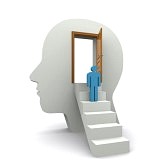“One of the greatest moments of my entire career was hearing thank you for a job well done.” This comment came from a leader who received praise for a specific document and was recognized openly. It was one of the greatest moments of his career.
It was one of the greatest moments of his career.
It cost nothing. It was nearly effortless, and it had lasting impact.
Even better, I asked the leader to remember that feeling of accomplishment, respect, and honor. I asked that leader to pay it forward over and over again through his team and colleagues. I reminded him that great leaders recognize others, reinforce behavior that aligns with the values and goals of the organization and people, and create a positive environment that people don’t want to leave. I reminded him that people want to feel valued just like him.
I challenged this leader to consider how each individual on his team wants to be recognized. Do they like emails of recognition? Do they appreciate thank you cards or group recognition? Do they like reports of accomplishment and discussion?
If he didn’t already know, I challenged him to ask him/her individually.
I challenge you to do the same for every team member (and if you’re a leader, you’re part of two teams or more!)
How do they like to be recognized? For each team member, identify how they generally like to be recognized. If you don’t know, ask them (hint: most employees will initially respond saying monetary contributions make them feel recognized. However, research supports the opposite so…Dig deeper. Explore what’s important to them – what makes them feel energized?
What attributes do you contribute to the team? I also challenge you to identify attributes you contribute to your team…what are you proud of? What would you like to be recognized for doing or saying or being? Recognizing and reinforcing others’ behavior and value requires a certain level of confidence and self-awareness. You should be able to articulate and appreciate your own value.
What attributes do they contribute to the team? Now identify 3 attributes each of your team members brings to the team. What value do they contribute? What areas do they excel?
This is your recognition lens. Use this lens to start looking for opportunities to sincerely recognize and reinforce the great value of your team. You will see results almost immediately.
As a Leadership Coach and Organizational Change Manager, I share stories of gratitude and recognition over and over again. I express gratitude to Leaders for their gratitude toward others. I make every effort to find the good and bring out the great in these Leaders. Then, I thank them for bringing great and ask them to pass it on.
I don’t just say thank you. I designed over 1,000 thank you cards that have been disseminated across an organization in 8 months…virtually every employee who is part of the initiative received two cards of thanks. Personally, I distributed about 200 hand-written cards. They are placed on cube walls, tented on the top of office cabinets and desks.
One of those cards was photographed and posted on LinkedIn earlier this year. It had great impact and many likes. The recipient commented, “Found this on my desk this morning. I know most of us shrug it off, but there really is nothing like feeling appreciated.” I smiled.
I add thank you or other words of gratitude to emails and in meetings. The words Thank You are everywhere. I say the words, “I appreciate YOU” daily. And I am sincere. I know the organization’s success depends on these amazing Leaders and the staff. I am grateful.
How have you received recognition that felt like the best moment in your career? How did you pay it forward?





